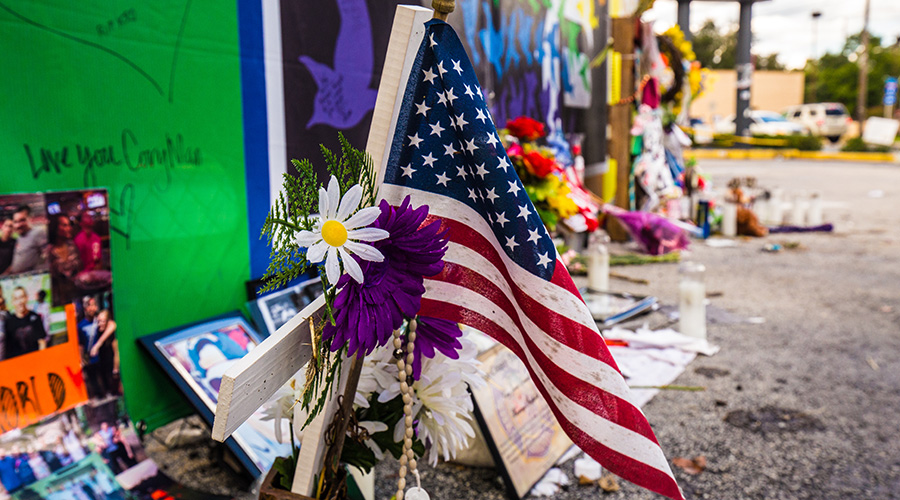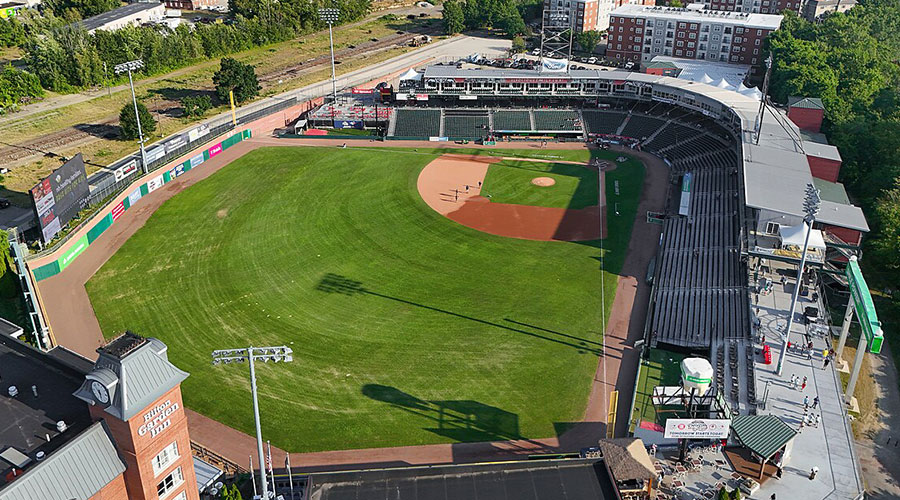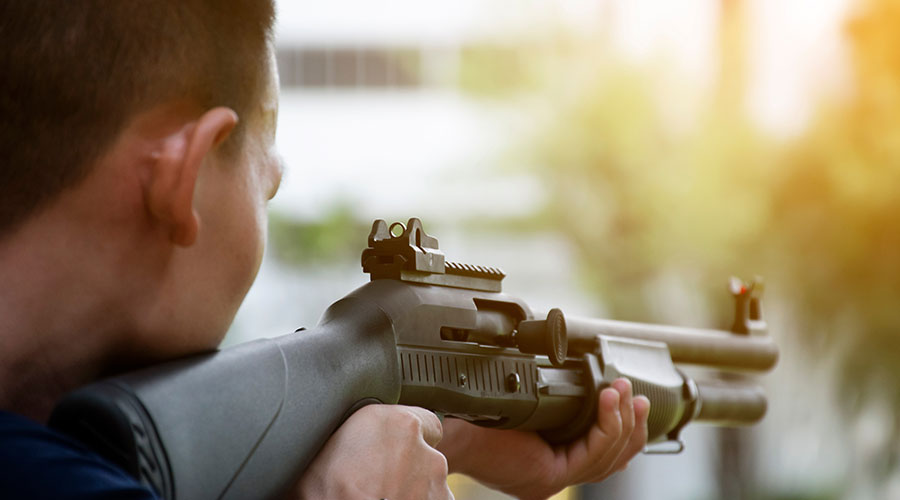Talk of code changes tops legal agenda
Does the collapse of the World Trade Center towers hold lessons for the design and construction of buildings? The answer could shape the next generation of codes. Plus, why terrorism insurance is such a mess
Investigations Could Bring Call for New Requirements
Improving fire resistance and preventing progressive collapse are among concerns being examined
When a bomb rocked the foundation of the World Trade Center’s two largest towers in 1993, lights went dim and communication systems went out throughout the building. Without knowing exactly what happened, occupants fumbled through darkness for upwards of seven hours as they found their way out of One World Trade Center. As a result, the building’s systems were upgraded to include more robust emergency lighting and communication systems.
The changes worked. On Sept. 11, 2001, two hijacked jets cut through steel and ignited an inferno but did not knock out the lighting and communications system. Occupants, even some from the upper reaches of the towers, were able to get out of the building in as little as one hour.
The World Trade Center had obviously learned from its experience. Now, the rest of the building industry is trying to learn from the World Trade Center.
Hours spent analyzing twisted steel, broken welds and fractured pipes from the rubble of the towers, combined with a re-evaluation of how occupants made their way to exits — and how some didn’t — could spur code organizations, building owners and government bodies to change how buildings are designed, built and maintained.
Experts who have studied the collapsed buildings say it’s likely that certain changes could allow buildings that experience similar circumstances to stand longer — or avoid collapse altogether — affording occupants precious minutes necessary to evacuate.
New York’s Building Department has already put in motion plans to change structural requirements, emergency evacuation procedures and requirements for life safety systems in the city’s high-rises. Most of the proposals in New York stem from a Federal Emergency Management Agency (FEMA) investigation into why the towers collapsed. FEMA found that the combination of fire and impact of the airliners caused the towers to collapse. In the first tower to collapse, the heat of the fire weakened connections between some of the structural steel beams and caused the collapse of several floors.
In its final report, the investigation team concluded that the two most important areas for future study include a review of current standards for fire resistance of connections and a more comprehensive look into the collapse of the second tower to fall.
Ramon Gilsanz, a structural engineer with Gilsanz Murray Steficek, served as a lead member on the FEMA investigation of Seven World Trade Center. Although that was not one of the Twin Towers, the FEMA investigation into that building prompted Gilsanz and others involved with the study to draft four goals that all buildings should meet.
Two call for instituting ways to enforce codes and to supply emergency personnel with information to quicken rescue and evacuation. The other two beckon buildings to be more resilient to fire and constructed so failure of certain structural components doesn’t lead to a collapse.
“We know that fire, which is a natural event, can collapse buildings,” says Gilsanz. “We should design buildings to resist collapse from fire in the same way as we design buildings to resist collapse from gravity, earthquakes, wind, et cetera.”
Fireproofing is one area that will be looked at over the next two years as the National Institute of Standards and Technology (NIST) continues investigating the towers’ collapse. The investigation could lead to more stringent fireproofing requirements of a building’s structural elements.
Gilsanz says the success of sprinkler systems has created a false sense of safety. Sprinklers perform so well, he says, that building designs rarely account for instances when the sprinklers might fail or be rendered useless, as was the case with the World Trade Center towers.
According to statistics maintained by the National Fire Protection Association (NFPA), no more than two people have ever been killed in a fire in a public building in which sprinklers have been operative. What’s more, sprinklers reduce the average property loss by as much as 66 percent.
An over-reliance on fire sprinklers, Gilsanz says, means fireproofing is more likely to get short shrift in design and construction. Because the impact of the jets fractured standpipes that would have carried water to the upper floors where the fires started, the only protection the towers’ structural components had were fireproofing materials.
Already, work is under way to improve the ability of fireproofing to adhere to structural steel, says Ron Klemencic, a consulting engineer with Skilling Ward Magnusson Barkshire in Seattle, which did some of the original design work for the World Trade Center.
Manufacturers have started partnering with fire code organizations to improve the performance of fireproofing, a new breed of which could be called for in code changes.
Klemencic, who is also president of the Council on Tall Buildings and Urban Habitat, says other design standards and code changes being discussed include reclassifying fire-rated materials. Right now, the industry assigns a 1-, 2-, 3- or 4-hour rating to fireproofing material. That system is counterintuitive, he says, because the numbers don’t refer to the length of time a material could withstand a fire. The system is simply a qualitative means of rating the fire-worthiness of materials.
Similarly, the events at the World Trade Center are creating questions about previously accepted design procedures and standards. Klemencic says engineers are re-evaluating the value and worthiness of protecting buildings to something known as a “design fire.”
A design fire is a hypothetical blaze used to determine the type and size of fireproofing and sprinkler systems needed to contain flames to 1,600 square feet. Given that the blaze in the World Trade Center covered 160,000 square feet, Klemencic says, there’s debate surrounding what a new appropriate size for a design fire should be.
While investigations into the World Trade Center focus on how the buildings fell, there is a nagging question as to whether the buildings should have collapsed. At issue is a concept called “disproportionate response.”
Klemencic says standards might be developed to classify what type of destruction is appropriate for certain types of incidents. For instance, he says, a bomb carried in a briefcase and detonated in the lobby of a high-rise wouldn’t be expected to cause the building to collapse. Collapse would be a disproportionate response.
Difficulties, however, arise as designers and engineers attempt to match building responses to various types of incidents. Should a hurricane shatter windows? Should an earthquake damage structural columns? Should the World Trade Center have collapsed?
“The question comes in over where the lines get drawn,” Klemencic says. “Now we’re in some gray areas.”
‘The Best Possible Data’
Aside from those proposed in New York, most code changes are likely to result from the multiyear investigation undertaken by 30 investigators from NIST. Over the next 24 months, the agency will attempt to determine the exact components of the World Trade Center that failed.
Using salvage steel from the towers, the agency will simulate the force created by the airliner striking the building to see how the I-beams behaved. It will microanalyze welds that held structural components together. It will use computer simulation to replicate the effects of the fire’s heat on the building.
At the end of those two years, the cause of the collapse and the performance of various materials should be established. Over the following four years, studies will continue to provide a basis for improving building and fire code standards, says Michael Newman, NIST spokesman.
“Our role is to provide the best possible data we can regarding what took place and to give the results to people who can make the changes,” he says.
Few expect building code changes to come quickly. Code-making bodies such as NFPA, the International Code Council and others are likely to wait until investigations are complete and corroborated before suggesting sweeping changes. Still, facility executives and building owner organizations such as the Building Owners and Managers Association (BOMA) International are likely to review proposed changes carefully. Most changes resulting from the investigation are likely to increase costs of new construction or require expensive retrofits.
Ron Burton, vice president of advocacy for BOMA, says he expects that owners would be willing to make certain changes if they seem worthy, cost-effective and likely to prevent tragedies resulting from future events. “Any remedies always have to be balanced against other concerns,” he says. “I think most people agree that trying to build buildings to protect them from an airliner flying into them isn’t a prudent thing to do.”
Once proposed, code changes face the arduous process of approval. Ultimately, individual states, municipalities and other government bodies determine whether proposed changes are best for their areas.
Architect Paul Doherty, president of the digitgroup, says some of the best suggestions coming from the World Trade Center incident have been from occupants.
For example, American Express and other tenants of the World Trade Center have requested that any new building have rooms every 10 floors or so that would contain firefighting and emergency rescue equipment. That suggestion stemmed from occupants watching firefighters’ movement hampered by carrying oxygen tanks and other gear up tens of flights of stairs the day of the attack.
Beyond that, he says, owners and architects have to stop worrying about saving money at every stage in the design and construction of a building and start thinking about what a building means to a community.
The loss of the World Trade Center, for example, is more than the dollar value of the steel, glass and concrete which it comprised. It was a cultural and economic icon of the Western world, the loss of which only deepened the recession in the United States.
“Code is a minimum standard,” Doherty says. “The problem is that people in our industry take code as gospel.”
Doherty points to one element of the World Trade Center that helped people escape on Sept. 11. Nonslip material placed on the nose of the emergency exit stairs sped the evacuation, particularly below the level at which the building’s standpipes broke and thousands of gallons of water rushed into the stairwell.
But that material wasn’t on the stairs’ landings. As evacuees hit the landing, many would slip, twisting ankles and knees and slowing the exodus from the building.
There is already talk of placing those nonslip surfaces on stairs, landings and other paths of egress, Doherty says. That’s the sort of lesson that a building owner need not wait for a code change to act on.
— Mike Lobash, executive editor
Insurance Costs Put Owners in a Bind
The catastrophic loss of the World Trade Center, combined with the realization that no act of destruction is beyond the scope of terrorists, has caused the entire property insurance industry to stop covering losses from terrorist events.
Today, only a handful of specialized companies around the globe offer such coverage.
“Terrorism coverage is available, but it’s expensive and it’s tough to know what you’re buying,” says John Kelly, executive vice president for Ryan Companies and president-elect of the Building Owners and Managers Association (BOMA) International.
Costs for terrorism insurance range from $100,000 to $750,000. Coverage limits range from $50 million to $100 million. Kelly, for example, recently purchased a $50 million policy with an annual premium of $150,000. One building owner paid nearly the same premium to purchase insurance for a $120 million portfolio containing buildings in Manhattan as he did to insure $3 billion of assets in facilities located across the country, says Alexandra Glickman, managing director and practice leader for Gallagher Real Estate and Hospitality Services.
Part of the reason why terrorism coverage is so expensive stems from a lack of data — so-called actuarial points — on which to base insurance premiums. The industry has little idea of the actual costs of covering losses from a terrorist incident, no way to identify typical losses and no easy way to generalize about buildings that are at more risk than others, Kelly says.
Insurance premiums were rising the months prior to Sept. 11, says Mike Taylor, an attorney with Leonard, Street and Deinard, a law firm. Wall Street’s woes made insurance companies more focused on raising revenues by boosting premiums than on attracting new business and investing those dollars in financial markets.
In addition, Taylor says, there have been a significant number of claims in the past few years related to natural disasters.
Building owners might have more terrorism insurance options next year, pending the outcome of legislative measures passed by both the U.S. Senate and House. Both Congressional chambers approved legislation that would provide a one-year federal backstop of up to $100 billion to insurance companies that suffer $10 billion or more in losses. The bill is now in a conference committee.
Until then, most decisions of whether to carry terrorism insurance on buildings aren’t being made by owners.
“It really comes down to what lenders are saying and asking building owners to do to secure financing,” says Glickman.
— Mike Lobash, executive editor
New York Leads the Way on Code Changes
Proposed city code changes advance; time could put other items on national agenda
New York City is likely to make changes to its building code as early as next year, with other locales expected to follow suit. Changes being discussed are aimed at improving facilities’ structural strength, fire protection systems, emergency evacuation procedures and mechanical systems. The proposed changes are to be sent to the mayor and city council in January for approval.
Specifically, the changes would:
- Require all high-rise office buildings — facilities taller than 75 feet — to be equipped with sprinkler systems within 15 years.
- Enhance emergency response communications in high-rise buildings and require that a critical building information card be posted.
- Require improved lighting and pathway marking systems in emergency stairwells and escape routes.
- Require fire-rated separations for elevator vestibules.
- Limit access to HVAC mechanical areas and require above-grade air intakes on new buildings.
Every indication is that code-making bodies, such as the National Fire Protection Association and the International Code Council, are not rushing to make changes. Rather, they are likely to wait for results of the National Institute of Standards and Technology (NIST) investigation into the towers’ collapse, scheduled to be completed within two years.
Fireproofing is likely to come under intense scrutiny. Evidence from the World Trade Center suggests that fireproofing material didn’t adhere to structural steel elements and wasn’t thick enough to withstand the intense heat for the two hours experts say was the minimum occupants would have needed to escape the buildings.
The first tower, which fell in 56 minutes, had 3/4-inch-thick fireproofing material. The second tower, with 1-1/2-inch-thick fireproofing, remained standing for 104 minutes.
Other changes likely to be considered include the widening of staircases to allow for quicker evacuation. At a May vote on the National Fire Protection Association’s (NFPA) life safety code, wider stairs were proposed but voted down due to lack of agreement over a new width requirement, says Robert Solomon, NFPA assistant vice president for building and safety codes. He expects the topic to come up again.
The idea of wider stairwells has raised some safety concerns. Doherty of the digitgroup says widening stairwells could actually slow evacuation attempts, as more people would try to rush down and clog the escape route.
Another area likely to be widely discussed is full evacuation of high-rises in the event of an emergency. Proposed code changes in New York City would require owners to draft plans for full evacuations. But not everyone agrees that full evacuation is the right approach. NFPA’s Solomon is one who recommends partial evacuations. “There is a tendency for people to want to evacuate the whole building even when they do not need to,” he says. “High rises have a lot of additional built-in protection features so they can do a partial evacuation.”
A new ordinance in Chicago addresses another area that could at some point make its way into codes nationwide. The new ordinance requires buildings that are 780 feet above grade to have a certified fire safety director. This person is the main contact for the fire department and is responsible for the emergency response program. Other cities have passed or are considering similar ordinances.
Chicago also requires buildings that are 540 feet above grade to file emergency evacuation plans. It is suggested that smaller buildings file plans; open-air assembly facilities must file a plan.
Other changes could affect the design process of buildings. Gilsanz, the structural engineer who helped investigate the collapse of the World Trade Center, says he favors peer review of engineering plans for high-rises. Some states, such as Florida and Connecticut, already have such a requirement. Gilsanz says the additional reviews wouldn’t necessarily lengthen design and construction timelines. Peer review could go on concurrently with other steps in the process.
Costs might rise, but so would the assurance that buildings are designed to be as safe as possible. “Peer review isn’t done for value engineering purposes,” he says.
Related Topics:











